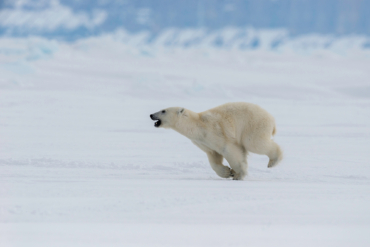From camping to festivals or relaxing with a good book, hammocking is an ideal outdoor experience — but only if you know how to hang a hammock.
Most hammocks come with a set of instructions that are usually very user friendly. Still, it takes most newcomers a few tries to get their bearings. Not only do you need a beautiful location (and a view), but you should also consider the angles, hardware, and the right trees, as well as any extra gear you may need.
There are still some Leave No Trace guidelines to adhere to when hanging a hammock. However, if hung correctly, it shouldn’t cause much, if any, damage to the area. Not only do you want to avoid tree damage, but you also want a comfortable place to lounge or sleep. In this guide, we’ll break down all the need-to-know basics of how to hang a hammock.

Before You Hang a Hammock: Choose the Right Location
Once you get to know the LNT principles for hammocking, choosing the right location becomes much easier. These principles apply to both setting up your hammock for an afternoon and for hammock camping.
Are Hammocks Allowed?
Not all parks or land management areas allow hammocks to be used. Almost none of Colorado’s state parks allow you to hang or camp in hammocks, and a few national parks like Bryce Canyon in Utah have the same rule. While this may seem like a strange regulation, it’s there for a good reason.
If hammocks are hung improperly or overused on the same trees, again and again, they can cause extensive damage to those areas. In high-traffic parks, the need to reduce the region’s human footprint has required them to ban hammocks altogether, mainly due to improper use.
So, before you go somewhere for the day or a camping trip, always check with officials to make sure that using a hammock is allowed.
Set Up Away From Plant and Animal Life
One of the easiest ways to find a good hammock spot is to look for areas that have apparent human use. This could be campsites or picnic areas. Avoid going into areas that are very obviously not used by humans, as you will be trampling vegetation and interfering with animal habitats more intensely.
Also, be aware of what poisonous plants and insect nests are in the area. Check on and around the trees to avoid contact.

Be at Least 200 Feet Away From a Water Source
Setting up your hammock along a river or on the shore of a lake makes for a serene afternoon and some fantastic photos, but it is a hazard to the area’s ecology. Riparian or shoreline habitats are fragile. So, the extra stress of someone hammocking in the area can easily damage trees, increase erosion, and invite others to do the same.
Avoid Pathways
Sometimes the best-looking trees for hanging a hammock are across the trail. Even if you are in an area with very few other visitors, don’t set your hammock up across the pathway (this goes for both human and animal paths). Before you set up your hammock, look around to be sure there are no game trails, either.

Examine the Health of the Trees
If you think you’ve found the perfect spot, the last location factor to look at is the trees’ health. Look at the trees to see if they have been used for hammocking before. If there is evident damage to the trees from hammocking or slacklining, then consider a different area so they do not become overused.
Then, look up and around the tree to examine its overall health. Do you notice any broken or dead branches above you? Is the tree rooted securely? The ideal size of a tree for hammocking should be at least six inches in diameter. Any smaller than this and you risk damaging or even breaking the tree.
As mentioned before, also look for wildlife in the trees. If you notice the tree you wanted to use is a nesting area, move on to avoid disturbing the natural behaviors of any animals that live there.
Pro Tip: Never attach multiple hammocks to the same tree.

How to Hang a Hammock
Use the Right Equipment
Most hammocks come with all the equipment you need to hang them properly. Despite this, they may not always be the best for attaching to trees. Check to be sure that the hammock you have uses tree saver straps of some kind (most ENO brand hammocks use tree savers).
The straps should be at least 0.75 inches wide or more, and many parks require straps closer to 2 inches wide. They should be made from nylon or polyester webbing that guards the tree bark against abrasion. Standard rope, wire, or cord digs into the bark and damages even the underlying layers of the tree. Never hammer or screw anything into the tree, either.
If there aren’t any quality trees or you don’t have the right equipment, invest in an ENO Roadie Hammock Stand that gives you a place to hang your hammock anywhere you can drive. Some campgrounds even provide stands for those who want to hammock camp.
Secure the Right Height and Angles
Although the angles at which you hang your hammock do matter, don’t feel obligated to measure them each time you hang the hammock. It will take some trial and error, but remember that comfort is key. If it feels comfortable to you, that’s the goal!
We will give the most comfortable angles and how to achieve them, so you have a solid foundation when starting.
Measurements to Remember
- The optimal hammock setup is at a 30-degree angle opening toward the tree.
- Keep the lowest point of the hammock no more than 18 inches off the ground.
To achieve a 30-degree angle, hang the hammock straps slightly higher than you first anticipate. The angle should be measured when someone is sitting in the hammock. You don’t want a flat hammock surface even when it is hanging unweighted. There should be a slight dip in the hammock even before you sit down.
Keeping the hammock around 18 inches off the ground gives you enough clearance to sit above the ground without struggling to get in and out of the hammock.
And that’s it! Happy hammocking!







